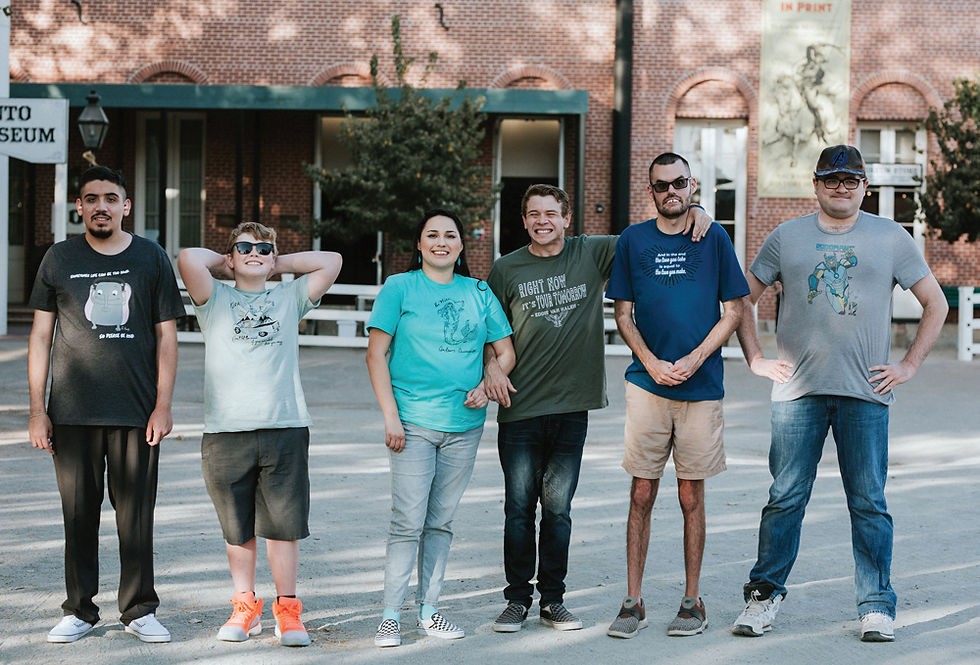What I’ve Learned About the Evolution of Schools
- Ardent For Life Magazine

- Aug 27, 2019
- 3 min read
Updated: Aug 27, 2019
Written by CT Morris - BS Elementary Ed., MS Ed.
I’m going to step out on a limb and say it loud and say it proud…I LOVE SCHOOL! The public education system, even with all its failings, is remarkable. It’s all of us uniting together and investing in our society and believing that all young people are worth investing in. It exemplifies our belief in social mobility—the belief that every child has the potential to contribute something to this world we share.

This has not always been true. Schools have evolved over time and changed drastically from their inception. So, let’s go down memory lane and do a contrast of that evolution. I know that on social media there are always posts about “the good old days” regarding public schools. But, were they really “good old days”?
Let’s see… the first public school (in the soon to be United States) was established in Boston, Massachusetts on April 23, 1635. It was known as the Boston Latin School, and was a boys only public secondary school. The school’s most well-known alumni include John Hancock and Samuel Adams. Interestingly enough, Benjamin Franklin was a dropout of that school. Well, well, well this is a huge black mark on the “good old days school”. No girls? No boys of diverse ethnicity? No wonder Benjamin Franklin ran screaming from that school!
Additionally, discipline was considered key to learning in the early days of the nation. Teachers frequently used corporal punishment in the form of a ruler or switch. Also, students knelt on sharp objects or stood for long periods of time. Teachers’ authority to discipline students came from a legal term from English common law, "in the place of a parent". Yikes, what a nightmare! I think we can all agree that was not “the good old days”. Thank goodness for education reformer Horace Mann who called it "a relic of barbarism". In 1837, he argued that students should learn how to monitor their own behaviors.
How about the retention rate in the “good old days”? Did you know that there is data to support the fact that in the early decades of this century more students failed than succeeded in schools? A national study of the dropout rate in the 1920s and 1930s showed that only 56 percent graduated from high school. Did students drop out because the subjects taught were harder in the “good old days”? You will be surprised to know that early public schools in the United States did not focus on academics like math or reading. In its place they taught the merits of family, religion, and community. Contrasted with data released by the U.S. Department of Education's National Center for Education which show that 84.6 percent of the students in the class of 2016-17 earned diplomas in four years.
So, let’s contrast education today; by the age of five or six, all American children have the opportunity to begin their formal education—regardless of race, ethnicity or gender. We believe that our democratic heritage applies to everyone. I love that our society values the individualistic belief that everyone should have an opportunity to learn and benefit from an education. Additionally, we know that education is the only route to a job that pays a decent wage.
And now we have the common core that is preparing today’s students to be ready for success after high school. The standards establish clear, consistent guidelines for what every student should know and be able to do in math and English language arts from kindergarten through 12th grade. They ensure students are prepared for today’s entry-level careers, freshman-level college courses, and workforce training programs. The Common Core focuses on developing the critical-thinking, problem-solving, and analytical skills students will need to be successful. Public schools are also teaching “soft skills” that is a group of skills that are not purely academic and include self-awareness, self-management, relationship skills, and responsible decision-making.
What I’ve learned about the evolution of schools is they’ve come a long, long way. Really, what’s there not to love about our public schools? As I stand with my students (in a public school) and we say the Pledge of Allegiance together; I look around my classroom in awe. We stand together—various genders, races, and ethnicities; and my heart swells with love for them, and the freedom that we share.

Carole Morris
Instructional Specialist, Author and Adjunct Professor. She is married to an outstanding, brilliant man and the mother of two grown awe-inspiring children, and grammie to three flawless grandchildren.
This story first appeared in Ardent
for Life Summer 2019 issue.




Comments